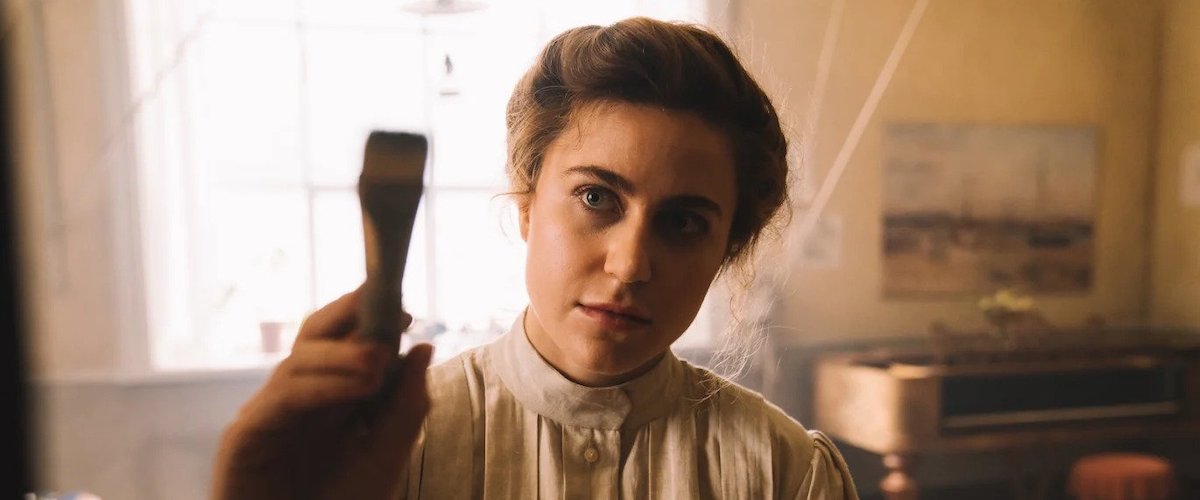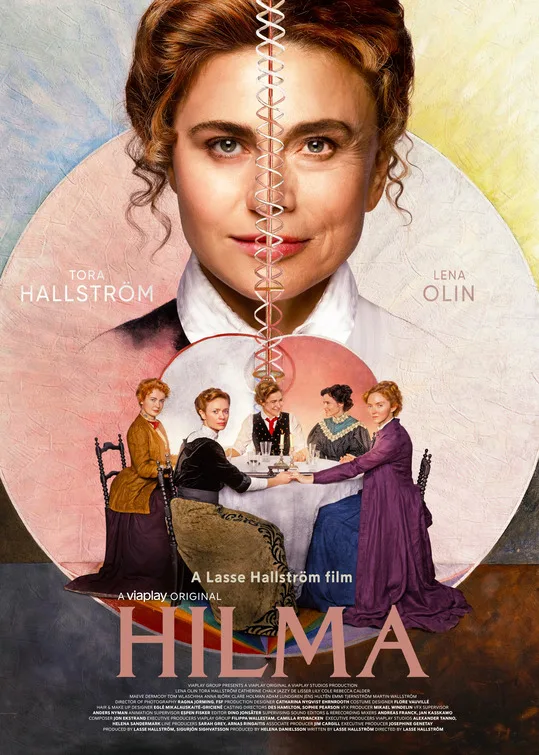When we look at the oldest art in the world, the paintings that go back more than 25,000 years, we recognize what we see: hands, horses, and mastodons. For millennia after that, generation after generation of artists tried to perfect the skill of making realistic images. They invented tools such as oil paint, special brushes, and canvas surfaces so that by the end of the 19th century, images had become so lifelike they could often fool the eye. (These paintings were called “trompe l’oeil.”) But by then, the new invention of photography was able to fulfill many of the needs for realism. This freed artists to transcend mere accuracy and begin to explore feelings and ideas.
And then, in the 19th century, as photography began to provide accuracy beyond what paint could convey, artists transcended representation with paintings that were not about people or things but about feelings and especially about ideas. The wall card next to the painting was not just information about the artist and the work but explanatory and as important as the work itself. One cheeky but iconic painting addressed the issue head-on: Rene Magritte’s The Treachery of Images is a painting of a pipe with words underneath in French saying, “This is not a pipe.”
For nearly a century, art history courses credited the Russian painters Kazimir Malevich and Wassily Kandinsky as the origin story of abstraction in Western art. But now, the Swedish artist Hilma af Klint is recognized for abstract paintings predating Russian artists. She was overlooked for decades. She did not allow her work to be shown until 20 years after her death, so it was not widely seen until the 1980s. And she was not taken seriously as an artist in part because she was a woman and because she did not produce the kind of wall-card-translatable manifestos that reassure curators, historians, and art buyers with intellectual (usually pompous) explanations.
A documentary about af Klint, “Beyond the Visible,” was released in 2019, following her first major solo exhibition in the US at the Guggenheim Museum in New York. That show is briefly seen at the end of “Hilma,” a narrative biopic written and directed by Lasse Hallström and starring his wife, Lena Olin, and their daughter Tora Hallström as the older and younger versions of the artist. This labor of love from the family is an overdue recognition of af Klint’s work and a tribute to the imperative that makes artists create.
Af Klint was an unconventional subject, but this is a very conventional, slightly stuffy biographical film: a series of defining moments and significant encounters in beautiful period settings and costumes. We also see repeated shots of a lead weight plunging into the water to measure depth. This was the profession of af Klint’s grandfather, and the image serves as a metaphor to illustrate how she followed in his tradition by exploring depths of art and expression. Some shots, like of af Klint descending a staircase, echo the spirals she included in her work.
The film begins as she is an old woman, thinking back on her life after her brother refuses to see her. As she gazes out of a bus window, Olin’s face shows us a woman who thinks of the past with some regrets and a sense of loss but still holds onto a fierce sense of purpose. Most of the film is a flashback, with Tora Hallström appealing as the curious, passionate artist.
Growing up, af Klint considers herself a scientist and believes everything in the world, including nature and art, is all connected. Her optimism and ebullience are derailed by the death of her beloved younger sister.
As a young woman, af Klint attends art school, where only the men come in the front door, and it is a compliment to say that a painting is so good you can hardly tell a woman painted it. In a life drawing class, with a male model in a loincloth, af Klint paints him completely nude, causing a stir. But she creates close friendships with other women in the class. With their help, she begins to create huge, colorful abstract works about huge, colorful concepts: the cycles of life from youth to old age. She begins a romantic relationship with one of them, who supports her emotionally and financially until a painful breakup.
Af Klint came of age in an era of great interest in communication with the spirit realm, and the loss of her sister propelled her into sessions with a medium. She connects the medium’s channeling of the spirit world through automatic writing with the vibrant abstract images of spirals and circles she creates, insisting that it is not her imagination that produces these paintings but what she sees. She thinks of herself as a scientist, with art as “a tool in my research” and “a map of everything.” She studies the work of a prominent Austrian philosopher and spiritualist named Rudolf Steiner (Tom Wlaschiha), also an influence on Kandinsky and abstract geometric artist Peit Mondrian. Af Klint refers to Steiner as her soulmate and invites him to see her paintings. He is encouraging on their first visit but later dismisses the work as not rooted in her soul.
It is a challenge for any filmmaker to convey the process of creating art. This film is less successful in having literal animated spirals circle af Klint’s head and montages of putting paint on canvas than it is in Tora Hallström’s looks of curiosity and determination, impelling her to create. Lasse Hallström’s greatest strength as a director is deep humanity, with compassion for even the most flawed characters. The affection from all three family members for af Klint and for creating art shines through the film.
Now playing in theaters.




















